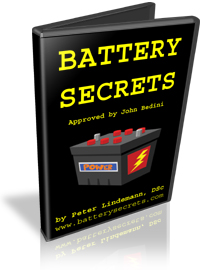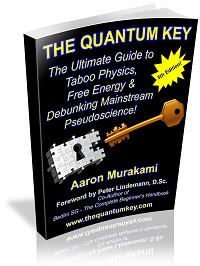Home | About Us | Testimonials | F.A.Q. | Contact Us | Battery Secrets
VISIT
OUR FOUR PRODUCT PAGES
TESLA CHARGERS | TESLA
SOLAR TRACKER 5 | SOLAR PANELS
| CRYSTAL LIGHT | BEDINI
SG
Tesla Chargers
THIS VIDEO ANSWERS
A LOT OF QUESTIONS
F.A.Q. (Frequently Asked Questions)
Can you explain the advanced battery charging
technology that is used in the Tesla Chargers?
Have these chargers actually restored unchargeable batteries to useable condition?
Does it cost less to charge my batteries with a Tesla Charger?
Where do the cost and energy savings show up?
How do I use my charger to rejuvenate batteries?
What kind of batteries can I charged with a charger from Tesla Chargers?
Are these chargers hard to understand and use?
How does the efficiency of the Tesla Chargers compare to other types of battery chargers?
Can
you explain the advanced battery charging technology that is used
in the Tesla Chargers?
Tesla Chargers use a proprietary, computer controlled, pulse technology
to charge batteries. The systems are completely automatic. The computer
actually tests the battery before each pulse is delivered, thereby
ensuring that the electrical energy is delivered in the most efficient
way possible. This allows batteries that are very weak, or unchargeable
by any other charger, to be charged with a Tesla Charger, and brought
back to useful service. Tesla Chargers is proud to be able to offer
you the most advanced battery charging systems available in the world
today.
Have these chargers actually restored unchargeable
batteries to useable condition?
Yes. As long as the cells are not physically damaged or electrically
shorted to other cells, our chargers can probably restore these batteries
to useful service. Since the development of this technology, approximately
80% of the discarded or useless batteries we have tested have been
able to be restored and put back to use. This "restoration process"
is really nothing more than the charge process being done correctly.
When this happens, the internal chemistry of the battery moves closer
and closer toward it's ideal state. Repeated charge and discharge
cycles further improves this process. In some cases, discarded batteries
that were regularly charged with Tesla Chargers gained in capacity
above that of a new, identical battery.
There is, of course, no way to know exactly how much restoration (or
capacity increase) can be expected with any given battery because
older batteries differ in their quality of manufacture, as well as
the conditions they were subjected to during charging and loading
previously.
Tesla Chargers makes no claims to be able to restore "dead batteries".
On the other hand, our testimonial pages are filled with stories of
many, seemingly hopeless batteries being restored to useful service.
Does
it cost less to charge my batteries with a Tesla Charger?
Yes.
Where
do the cost and energy savings show up?
In the long term. With conventional battery chargers, battery capacity
degrades slowly with each charge. In order to get the same amount
of energy out of the battery, the common practice is to place the
battery on the charger more frequently and/or for longer periods of
time. Since the battery cannot retain the charge, this energy is being
wasted.
Our chargers reduce this energy waste by significantly improving the
battery's ability to store its charge. Consequently, the battery spends
less time on the charger, consuming less energy, and giving you more
of the power you need.
The other big savings is the money you save by not having to replace
your old batteries with new ones very often. These two energy saving
methods make your Tesla Charger pay for itself quickly and allows
you to keep all the rest of the money in your pocket.
How do I use my charger to rejuvenate batteries?
Just as it took time for your batteries to degenerate, restoring the
proper chemical structure of the battery plates takes time. After
several cycles of charging with our chargers, and then discharging
at a slow rate, the plates will gradually be restored to their optimum
condition.
Our rejuvenator models 30A12 and 15A12 fully automate this process
and provide "battery rejuvenation" in the quickest possible
time. These chargers, when placed in the "cycle" mode, alternately
charge and discharge the battery until its most optimum capacity is
reached.
Although the most dramatic increases in capacity are usually seen
within the first 10 cycles, typically, a gradual increase in capacity
results from the continued use of our chargers.
How would I use my charger to get the maximum
longevity out of a new, high capacity, 12 Volt Lead-Acid Batteries?
The best Tesla Charger for this application is the 30A12. In general,
large lead-acid batteries should be charged back to a state of full
charge immediately after each use. Of course, you have to choose a
charging routine that is appropriate for your application.
Depending on its size and composition, a new battery will usually
reach its maximum capacity after 2-5 cycles when being charged with
the 30A12 series chargers. After any battery (old or new) has reached
its maximum capacity, a balance should be maintained that:
1) allows the battery to be charged as gently as possible, and
2) does not allow the build-up of sulfation to occur.
For maximum life, the battery should be used frequently, charged to
a full state of charge after each use, and stored in a fully charged
condition. When you charge your battery with the 30A12 charger and
use frequently, you should expect the longest possible life from your
battery.
What kind of batteries can I charged with
a charger from Tesla Chargers?
There is a Tesla Charger that is right for every kind of rechargeable
battery that you currently own. Our Universal 1AU is the most versatile
battery charger on the market today. It will recharge and restore
any rechargeable battery from as small as a 1.2 Volt Ni-cad, to the
battery in your camera, your cordless phone, your cell phone, your
laptop computer, your rechargeable flashlight, and any type or voltage
of portable power tools, up to 24 volts!
Our first and most popular model is the 2A12. It is designed to charge
12 Volt lead-acid batteries, from the small gel-cell type, to the
automobile start type, to the Marine deep-cycle type. It may only
be rated at 2 amps, but this little charger is a real work horse.
The industrial models 30A12 and 15A24 are made for 12V and 24V batteries
of most larger sizes. These units also provide the automatic "cycling"
feature which can charge and load any battery in sequence, to increase
the capacity of older batteries quickly.
The E-Car charger unit works on 72 Volt to 144 Volt systems in electric
vehicles, up to 250AH. This is the finest charger available today
for an electric automobile. It maintains the battery capacity at maximum,
so every charge provides maximum mileage, year after year.
The 20AU charger is for banks of batteries ranging from 24 Volt up
to 72 Volt. Feel free to call us for advice on your specific application.
Are these chargers hard to understand and
use?
No. These chargers are fully automatic and require little understanding
to work. For your convenience, complete directions for use are printed
right on the chargers. However, in order to get the best results and
to learn how to operate them safely, users should read and understand
the owner's manuals.
How does the efficiency of the Tesla Chargers
compare to other types of battery chargers?
This is a difficult question to answer because of:
1) the differing methods of measuring efficiency, and
2) the wide variety of chargers that are on the market today.
Most manufacturers calculate the efficiency of their battery charger
as the ratio of the power delivered to the battery from the charger
vs. the power consumed by the charger. This measurement can be deceiving,
especially if the battery is older and is not charging very well.
It is also difficult to measure a battery charger's efficiency when
the battery is constantly degrading in capacity and spending more
time on the charger and less time being used.
For practicality, we are interested in a more honest, total efficiency
measurement. We prefer to measure efficiency as the ratio of power
delivered from the battery vs. the power consumed by the charger.
This not only accounts for the efficiency of the battery charger,
but also the efficiency of the battery during its charge and discharge
cycles. In that sense, we measure the efficiency of our chargers,
not only by how little energy they draw from the wall, but also by
the efficiency of the batteries they charge!
If you consider efficiency as total lifetime of amp-hours delivered
by the battery vs. total kWh's consumed by the charger, like we do,
the battery that maintains its full capacity has the highest efficiency.
When you add the significant savings because of lower battery replacement
costs, you can see that the chargers sold by Tesla Chargers are the
most efficient in the world.
Home | About Us | Testimonials | F.A.Q. | Contact Us | Battery Secrets
VISIT
OUR FOUR PRODUCT PAGES
TESLA CHARGERS | TESLA
SOLAR TRACKER 5 | SOLAR PANELS
| CRYSTAL LIGHT | BEDINI
SG







 Classic
Energy Videos
Classic
Energy Videos